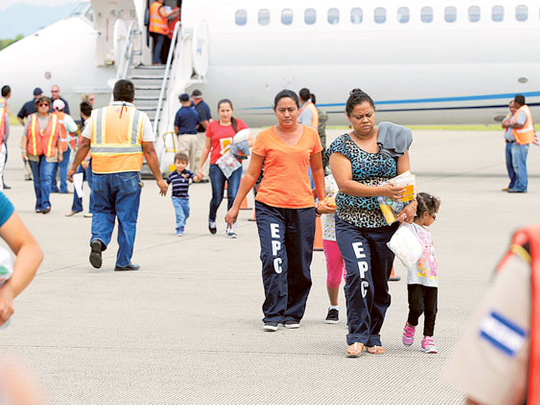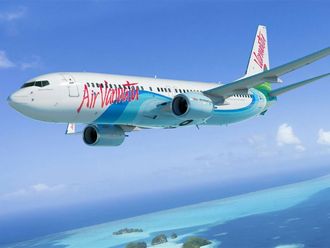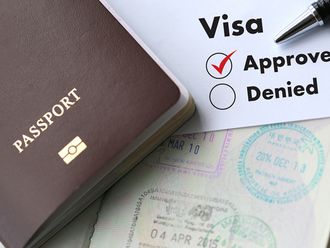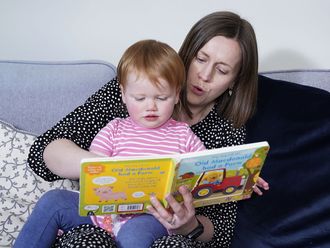
San Pedro Sula, Honduras: The first lady and her entourage were waiting. So were politicians, camera crews and aid workers in blue vests, ready to hand out suckers and balloons to toddlers pulled along by their frazzled mothers.
A chartered flight that landed here on Monday was the first carrying only mothers and children deported by the US as it tries to stem a wave of migration from Central America that has overwhelmed US border officials. US officials said there would be many more.
While Honduran officials were trying to put the best face on the process, one human rights worker termed the exodus of thousands in search of jobs or safety from rampant violence, and their forced return by the United States, “a great tragedy.”
Critics said Honduran government inaction was largely responsible and that the welcome in San Pedro Sula, a city sometimes called the murder capital of the world, was mostly a show. Despite the government’s promise of job leads, a $500 stipend, psychological counselling and schooling, returning mother Angelica Galvez said she wasn’t expecting much.
“They haven’t helped me before,” said Galvez, 31, who was travelling with her 6-year-old daughter, Abigail. “Why should I believe them now?”
Galvez and her daughter were among the 38 Hondurans on the flight, who had been held at a US detention centre in Artesia, N.M. Forty people — 18 mothers, 13 girls and nine boys — had been scheduled to be on the flight, but two fell ill and didn’t travel.
US officials said the flight reflected their determination to stem the tide of migration. The number of women and children arriving in the US from El Salvador, Guatemala and Honduras has skyrocketed in recent months. More than 57,000 unaccompanied minors have sought permission to remain.
US officials have long been sending back adults and some children; Monday’s flight was the first to carry only mothers and children. Many of those who have headed north said that although poverty and violence pushed them to act, they had moved now because they heard that there was a new US policy that made it easier for unaccompanied children or single women with at least one child to remain in the country.
In fact, only unaccompanied minors from countries that don’t border the US are guaranteed a chance to make their case before an immigration judge, according to US law. But when single mothers started appearing with their children, border officials had no place to house them and released many with a “notice to appear” later.
“This is just the initial wave,” said an official with the Department of Homeland Security. “Our border is not open to illegal migration, and we will send recent illegal migrants back.”
Honduran First Lady Ana Garcia de Hernandez, who was at the processing centre when the group arrived, has been at the forefront of the crisis, spearheading the new governmental programs she says are aimed at improving the lives of those who are sent back and giving others a reason to stay.
“They are very sad, of course,” she said of the women who arrived back in Honduras on Monday. “But we want to give them opportunities.”
At the processing centre about half a mile from the airport, women and children received food, medical screenings and money. Officials kept a close watch on them, cordoning them off and away from the media as they boarded yet another bus for stops at a child welfare office, shelter and terminal.
Galvez, a single mother, said she left Honduras because she couldn’t find a job.
Despite all the attention they received upon their arrival, Galvez said she didn’t even receive enough money at the processing centre to get her all the way home to La Ceiba — about a three-hour drive northeast of San Pedro Sula. Instead, she planned to stay the night with a family member in the city.
She and her daughter started their trek north on May 27 after family members told her there was a new US law that gave people like her permission to enter the country. She walked, took a series of buses and paid criminals about $25 dollars to ride with her daughter on top of the infamous northbound freight train known as La Bestia, or the Beast.
She had no intention of sneaking into the US, instead giving herself up to Border Patrol officials near McAllen, Texas, she said. She never made it to her brother’s home in Dallas.
“It was a dangerous trip,” she said. “I wouldn’t recommend it to anyone.”
But others were still trying. More Central American migrants were crossing the Suchiate River from Guatemala into Mexico on Monday, sheltering at relief centers in southern Mexico or waiting alongside railroad tracks hoping to climb aboard a train and head to the US
La Bestia had stopped running for several days while workers repaired tracks that had been vandalised. It was expected to resume late Monday or Tuesday.
“I want to keep going,” Jessica Sandoval, 30, said as she waited at a refugee shelter in Arriaga, Mexico, with her three daughters, ages 2, 8 and 11. They left La Ceiba, Honduras, 17 days ago and had been at the shelter for nearly a week.
She said her region of Honduras had become a living hell because of gangs, drug traffickers, political violence and a lack of jobs after numerous factories shut down.











